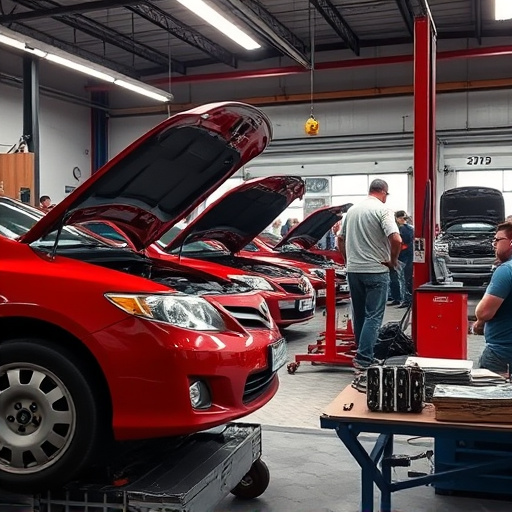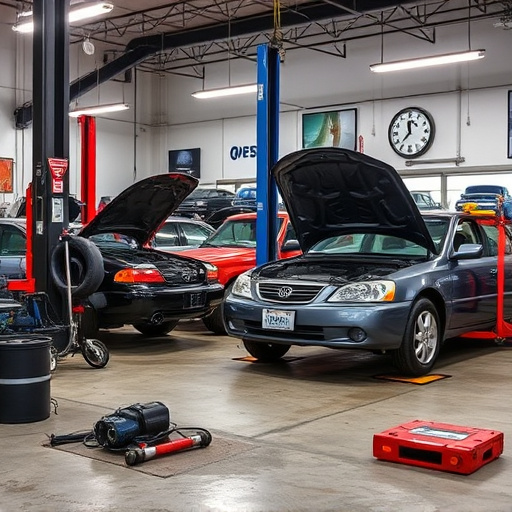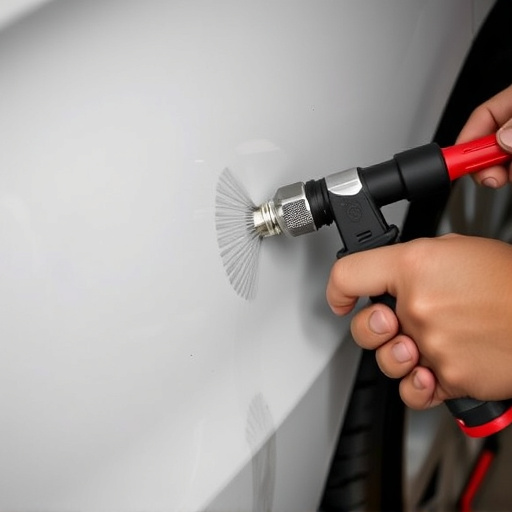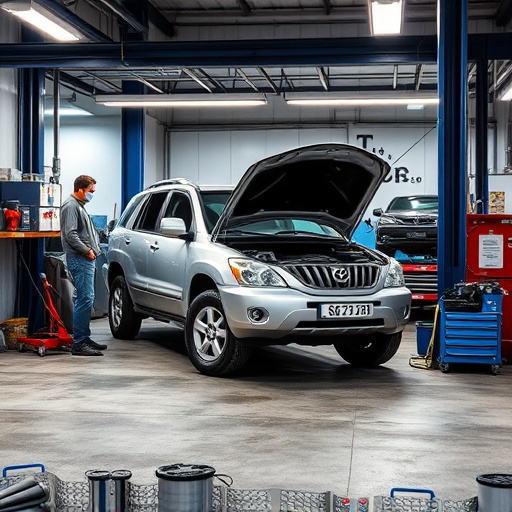Tesla body computer reset is a crucial process for addressing system faults, clearing glitches, and diagnosing safety features like airbags and lighting systems accurately. For minor issues, a reset clears trouble codes, but persistent problems require professional auto repair experts who use specialized tools for detailed diagnostics and repairs, ensuring Tesla's advanced safety standards.
“Uncover the secrets to troubleshooting your Tesla’s complex systems with our comprehensive guide. Delve into the art of performing a Tesla body computer reset, a powerful tool for diagnosing and resolving faults. From airbag malfunctions that demand immediate attention to lighting issues plaguing your vehicle, this article equips you with step-by-step instructions. Master the process, enhance safety, and restore optimal performance. Learn how a simple reset can navigate you through complex challenges, ensuring your Tesla remains a cutting-edge marvel.”
- Understanding Tesla Body Computer Reset Process
- Diagnosing and Resolving Airbag Faults
- Handling Lighting Issues: A Step-by-Step Guide
Understanding Tesla Body Computer Reset Process

The Tesla Body Computer Reset is a crucial process for addressing and troubleshooting various system faults within the vehicle. It involves a series of steps designed to clear and reset the onboard computer’s memory, effectively erasing any glitches or errors. This procedure is particularly relevant when dealing with issues related to airbags or lighting systems, which are critical safety features in any car, including Teslas.
During a Tesla body computer reset, specialized diagnostic tools are utilized to communicate with the vehicle’s computer network. Technicians can then identify and isolate faulty components, ensuring accurate diagnosis. This method is a game-changer in auto body repair, especially when compared to traditional methods that might rely more on guesswork. It offers a precise and efficient approach, which is essential for maintaining the advanced safety standards set by Tesla and even paves the way for more complex repairs, such as those required by Mercedes-Benz collision repair specialists.
Diagnosing and Resolving Airbag Faults

Diagnosing and resolving airbag faults in a Tesla involves a systematic approach due to the vehicle’s advanced safety systems. The first step is to perform a Tesla body computer reset to ensure that no faulty codes or glitches are interrupting the airbag system. This process can often resolve minor issues related to sensor malfunctions or communication errors between the body computer and airbags. After resetting, inspect all airbag modules for any visible damage or wear, as physical injuries can cause faults.
If the problem persists, it’s time to engage the services of professional auto repair experts who have experience with Tesla vehicles. They will utilize specialized diagnostic tools to uncover the root cause, which could be related to a faulty sensor, wiring issues, or even problems within the airbag inflation mechanism. Regular maintenance and timely repairs for these critical safety components are essential, and seeking expert assistance ensures that your Tesla’s airbag system functions optimally, providing peace of mind for both you and your passengers. Remember, when it comes to airbag faults, prompt attention from reliable auto repair services is crucial for the safety of all occupants.
Handling Lighting Issues: A Step-by-Step Guide

Many Tesla owners have experienced lighting faults, from dimming headlights to flickering dashboard lights. While these issues might seem minor, they could indicate a more serious problem with the vehicle’s complex electrical system. The root cause could be faulty wiring, a malfunctioning body computer, or even an airbag control module failure. To address these concerns effectively, many opt for a Tesla body computer reset. This process involves accessing and clearing diagnostic trouble codes (DTCs) stored in the car’s onboard computer, which can sometimes fix minor glitches.
For more persistent lighting issues, it might be necessary to consult a professional vehicle body shop or collision repair services. Auto repair specialists have the tools and expertise to trace the problem to its source. They will first perform advanced diagnostic scans using specialized equipment to identify faulty components. This may include checking the condition of wiring harnesses, replacing dimming switches, or even updating the vehicle’s software through an OBD-II port. By following these comprehensive steps, they ensure that your Tesla is not only safe but also reliable and well-maintained.
In conclusion, addressing Tesla body computer resets for both airbag and lighting faults is a key aspect of maintaining your vehicle’s safety and functionality. By understanding the reset process, diagnosing issues effectively, and following step-by-step guides, you can efficiently resolve these challenges. Remember that prompt action on any fault is crucial to ensuring the safety of yourself and your passengers. For Tesla owners, staying informed about these procedures empowers them to navigate potential problems with confidence.













